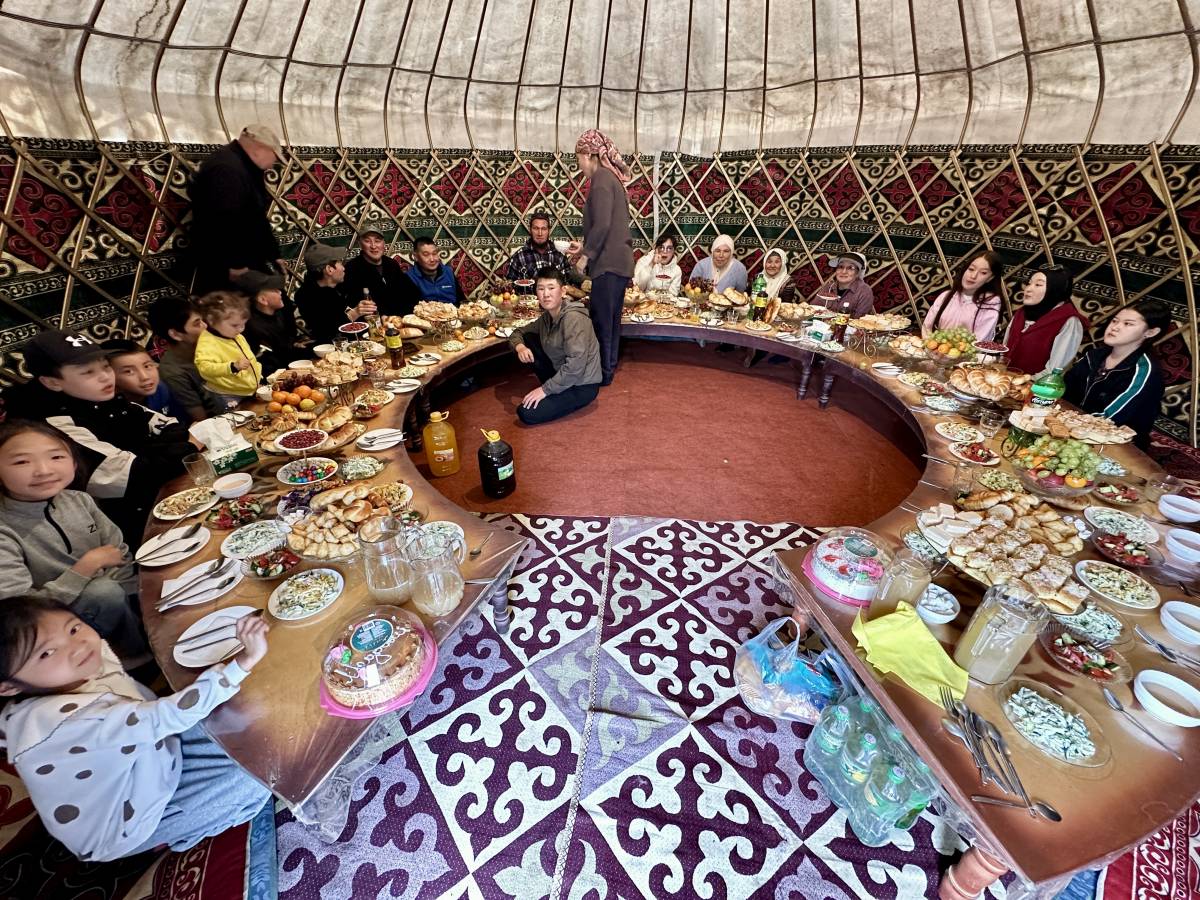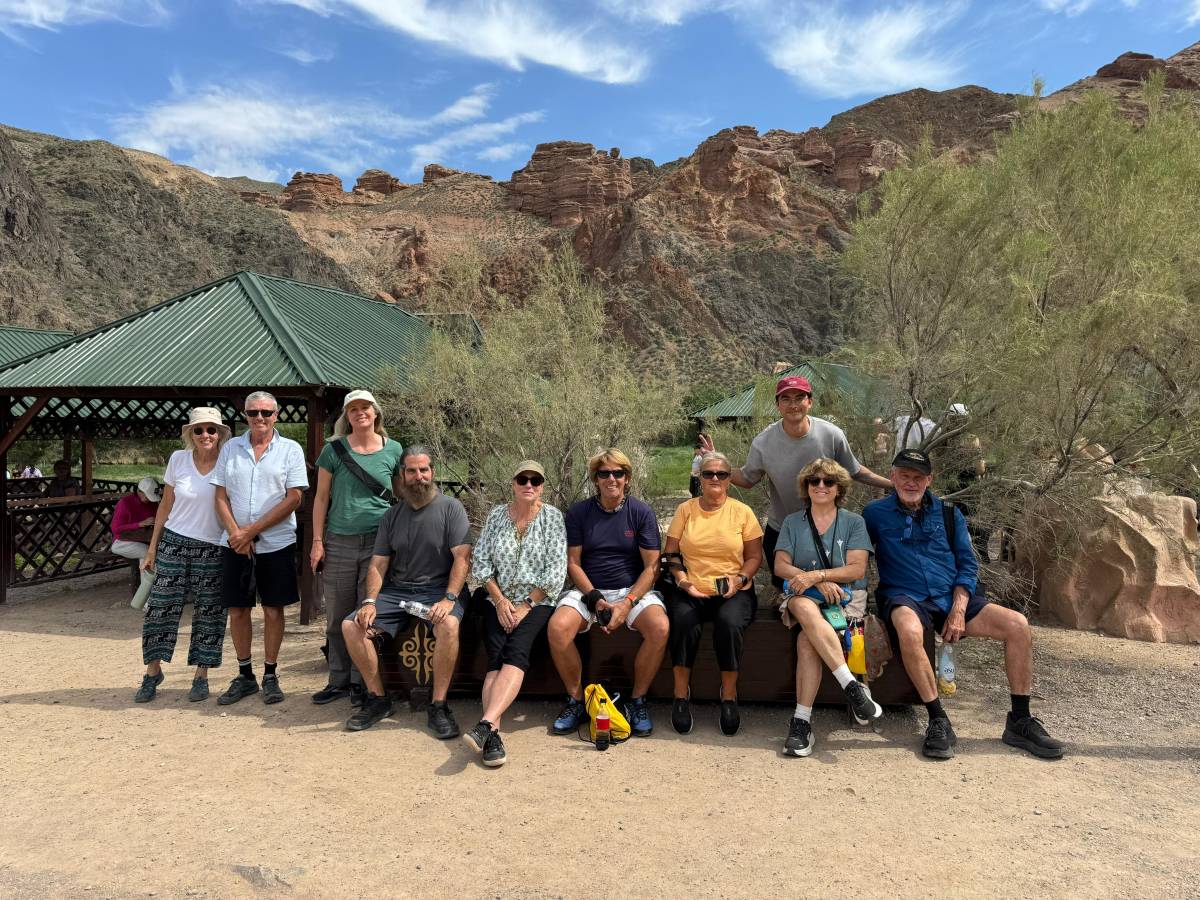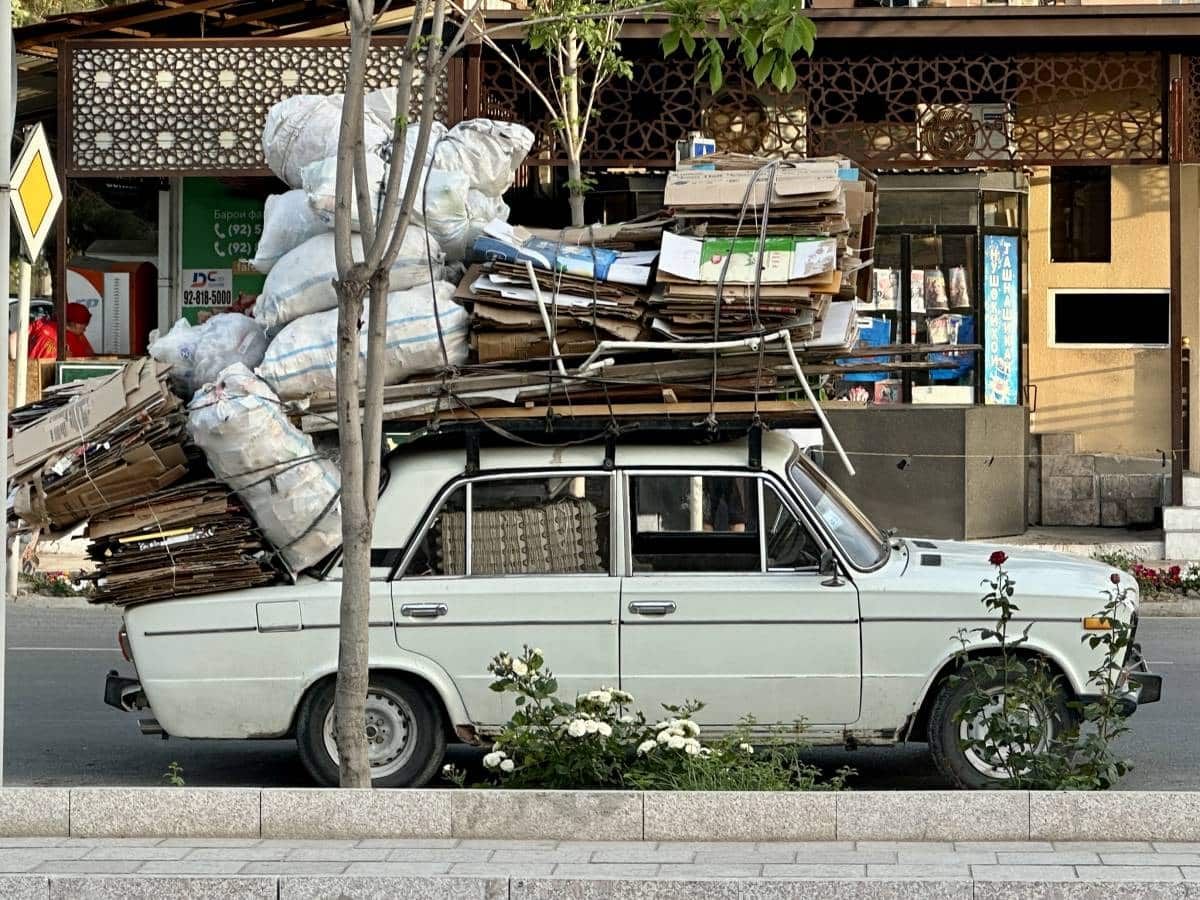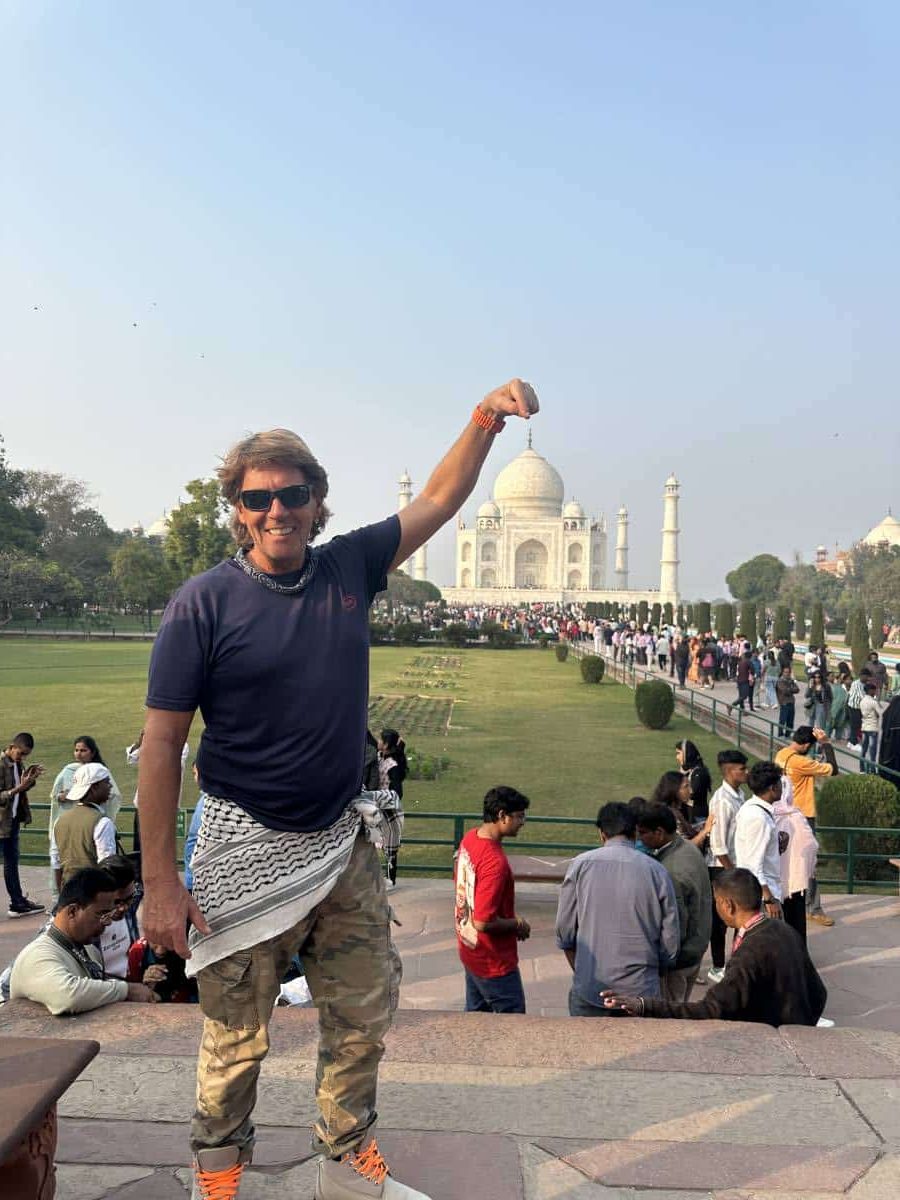
New Delhi & Agra
I arrived at the hotel about 2 am and everything was closed. I had to wake up the night porter to gain access. My room was typical for an Indian three star. All the hotels are chosen by the tour company so it wasn’t like I could request the King Julian suite. My last trip to India was a little over twenty years ago and not much had changed. Chaotic roads, strong smells, and cows were still in charge.
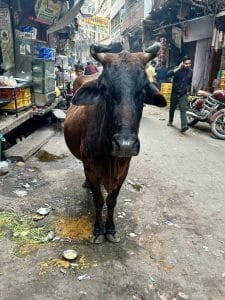
The following morning the place had come alive with people everywhere. I had a free day before meeting the group and my main objective was to see the Red Fort. I chose Sanjit and we trundled off in his tuktuk, locally known as an Indian helicopter. I haven’t experienced such traffic chaos since, well, the last time I was in India. Traffic lights, lane discipline, right of way, direction of travel – mean nothing in India. There seemed to be no rules, but rather bizarrely, there were. Just not rules that I would comprehend. These were Indian rules.
Sadly, the Red Fort was closed, so we went a couple of kilometres down the road to Jama Masjid which is the largest mosque in Delhi. Shoes off, trousers rolled down, no photographs of men praying.
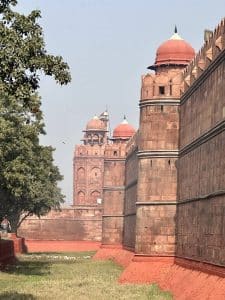
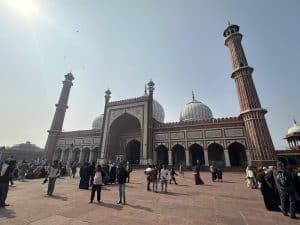
Next up was Raj Ghat where Gandhi was cremated on the banks of the Yamuna River and his ashes buried. It was the 77th anniversary of his death. Not a hugely impressive place considering he was one of the most influential leaders of all time, but perhaps perfectly fitting for a man possessed with such humility.
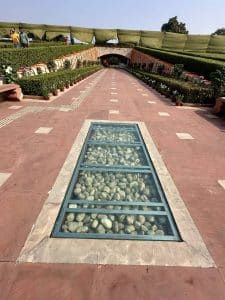
My penultimate landmark was India Gate built by the British in 1921 as a memorial for all the Indian soldiers who had fallen during World War I and the lesser known, Afghan War.
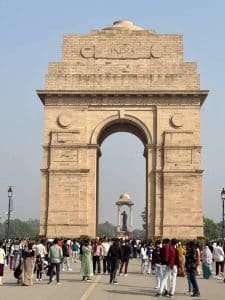
Sanjit was very keen on taking me to the Indian loom shop. He wouldn’t stop banging on about it. It sounded to me like he was delivering poor unsuspecting tourists to the loom shop. I forcefully declined his offer. He delivered me back to the Magic Tree Hotel and I went wandering around the local area.
The following day I had a free morning and headed off early to see Humayun’s Tomb. Humayun was the second Mughal Emperor who ruled in the early sixteenth century. He died young at the age of 47 when he fell down the stairs of his library whilst carrying books. Reading is generally considered a positive experience, but not for Humayun.
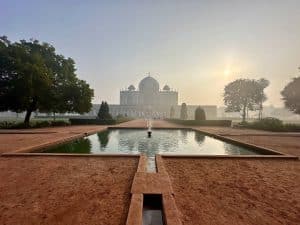
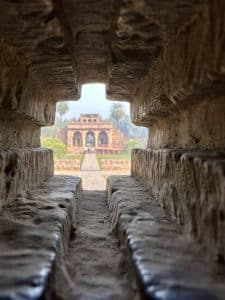
At lunchtime I met with tour guide, Joe and the group. Only six of us with two more joining in Agra. Five UK and one American from Maine. We trooped off to the metro station and headed for a Sikh temple. Upon arrival we were given our instructions. Shoes and socks off, no selfie-sticks, wash hands, walk through a sheep-dip.Sikh means to “learn”, and I did learn a few things. Turbans are about six metres long and a metre wide. Those who are baptised cannot cut their hair. This includes, trimming, shaving, plucking, threading, or even dyeing. Hair is a gift from God. A black turban represents humility and a surrender of the ego.
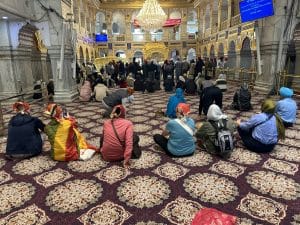
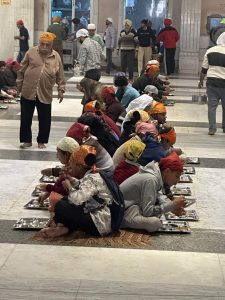
After being reunited with my footwear and selfie stick, we headed for the spice market which was huge. This was the spice centre of Delhi and had everything a spice enthusiast might require. I abandoned the group at this point and went for a wander. They’ll get used to it in a day or two.
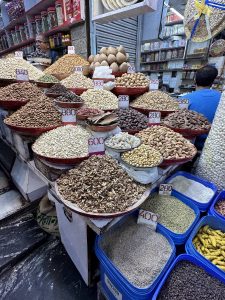
The following morning we headed off early to the train station for a two hour ride to Agra. Joe was keen we didn’t miss the train so we arrived an hour early. In the end the journey took 3 and a half hours and by the time we arrived I was busting for the restroom. The state of the toilets on the train was tragic. I must have looked at a dozen options on the 30 carriage train and didn’t find one that met my standards of acceptability. Some were actually a health hazard.
After my ecstasy of finding a western toilet at Agra station, we headed to Sikandra which is a monument dedicated to the third Mughal Emperor, Akbar the Great. His mausoleum wasn’t quite finished by the time he died, so his sons finished it off for him. Akbar was only 14 when his dad fell down the stairs carrying books, and assumed the throne. He lasted almost 50 years as Emperor. There were wives, and then there was the harem. It would appear that the history books couldn’t keep up with Akbar’s insatiable desire for satisfaction. Estimates suggest it was in excess of 300 and possibly up to 5000.
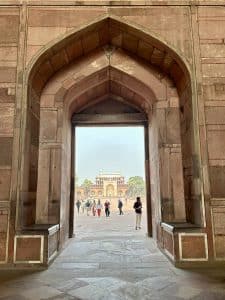
Our guide then took us to experience an acoustic phenomenon with both incredible echoes on a certain spot, as well as the ability to stand diagonally from someone, facing a wall around 25 ft away, talking normally and being heard by the other person. Quite amazing. Something to do with angles and symmetry.
Akbar had five sons, but it was his third son, Jahangir who became Mughal 4, after his two older brothers died young. He was succeeded by his son, Shah Jahan, who built the Taj Mahal. We wouldn’t had the TM if his two elder brothers hadn’t died.
Next up was the Taj Mahal about a mile from the hotel. Number One on the bucket list. We had the equivalent of speedy boarding so we didn’t have to queue. We had a little chap called Ravi as our guide. Small guides are difficult to follow in busy places, and it was busy.
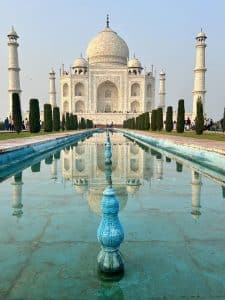
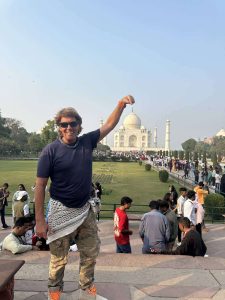
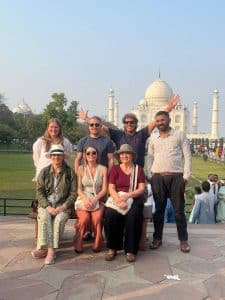
The Taj was built by Mughal Emperor number five, Shah Jahan, in honour of his wife, Mumtaz, who had died during childbirth aged 37. It was her 14th child. She was apparently the favourite wife of SJ. On her death bed she asked three promises of him. Remember her fondly and built something in her honour, don’t get married again, and look after the kids. He managed to do all three.
Construction began on the Taj Mahal the year after Mumtaz died and took 22 years to complete. He was very wealthy and was said to have 23% of the world’s GDP. Five years after the Taj was completed, his third son Aurangzeb imprisoned his father and became Mughal 6. Shah Jahan was never released and died 7 years later.
We took photos, including the bench where a wistful Princess Diana sat all those years ago. Apparently they closed the place for her visit. I left the others and walked back to the hotel for some Paddy time (Yellowstone, series 5). A day of contrasts. The Taj Mahal and unusable toilets.
We had a second day in Agra and headed for another Red Fort. This one was open and enormous. Ravi was there again to explain things to us. Apparently the fort took 90 years to build and took four generations of Akbar’s family to complete it. Akbar, mentioned above had three wives – a Muslim, a Hindi, and a Christian. He was supposedly non-denominational in attitude and actually started his own religion. It didn’t catch on. At its high point there were 18 followers- mostly family members. This was the fort where Emperor number five (Shah Jahan) was imprisoned. We saw his prison. Very palatial indeed.
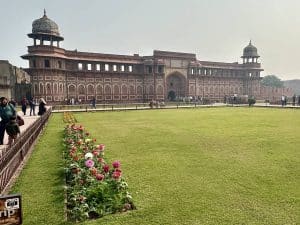
The Mughals were doing rather well until Akbar made a fatal mistake and allowed the East India Company (established 1600), to start trading in the Indian Ocean Region – particularly spices. It took a while, but this saw the slow decline of the Mughals as the British moved in and took control. At one point the EIC was the largest company in the world.
The group went to lunch at a very special place indeed. Sheroes is a cafe and all the employees were victims of acid attacks. This was apparently a thing here in India. Mostly it was jilted men who had their marriage proposals declined. They would then use sulphuric acid to disfigure these girls. Yvonne Elliman once sang, “If I can’t have you, I don’t want nobody baby”. These cruel people were more like, “If I can’t have you, then nobody else will”. It was a very moving experience and instead of a bill, we just paid what we thought was appropriate. There are now three of these inspirational cafes in India.
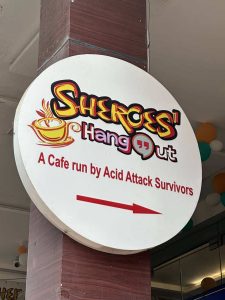
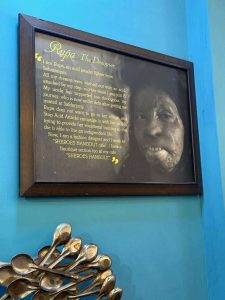
Our overnight accommodation was a train three bunks high on each side. Luckily I was given a lower bunk. The trip was ten and a half hours and there was no TV lounge, bar, or restaurant. But there were some unusable toilets. They put us in third class on the train. What a shit show. Eight people per section. Six of them Indian. Not sure why Intrepid didn’t put us in first or second class. At one point I was lucky enough to witness how the train gets rid of rubbish. A guy came along, opened the door and threw the contents of the bin on the track. Job done.

